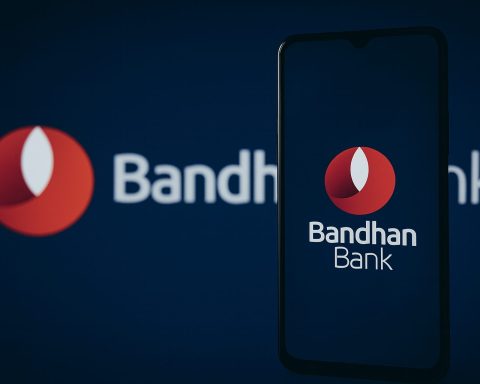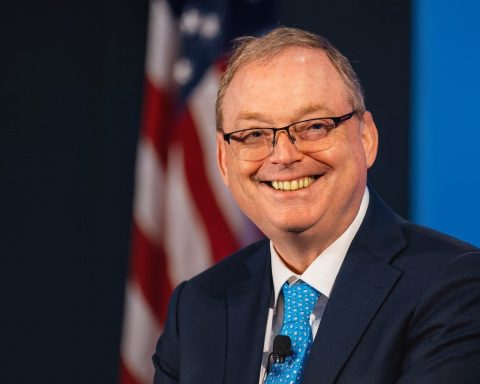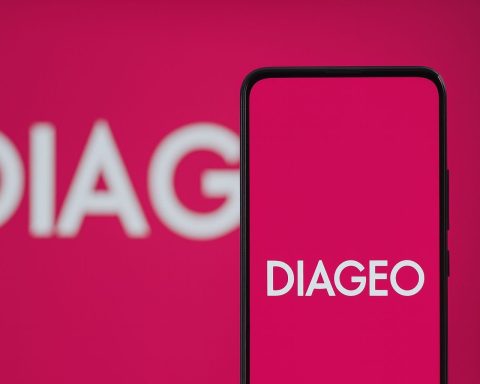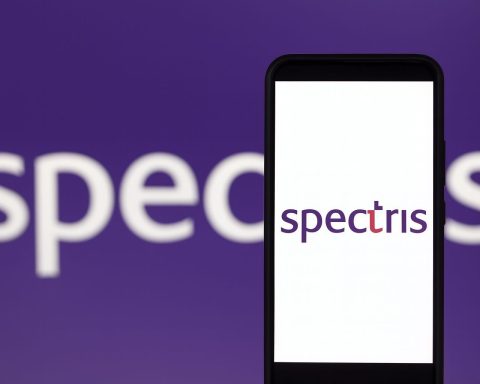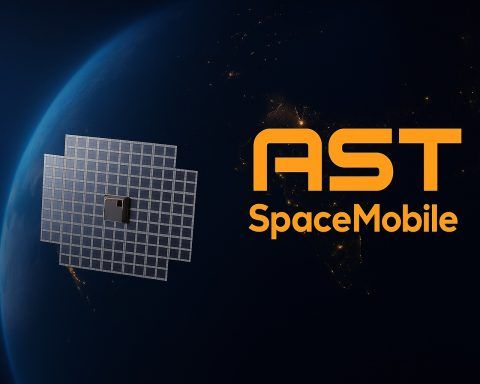- As of early 2025, about 4.88 million Salvadorans are online, representing 76.9% of the population.
- The telecom sector privatized in 1997, leading to competition among Claro (~40%), Tigo (~25%), Digicel (~11%), Movistar (~6%), and Others (~5%) for fixed broadband.
- Mobile networks cover about 93% of the territory, and 92% of Salvadorans have at least 3G coverage.
- Mobile phone subscriptions reached 11.5 million in 2022, exceeding the 6.5 million population for roughly 160% penetration due to multiple SIMs.
- Fixed telephone lines and legacy DSL have stagnated at under 0.9 million, as mobile becomes the preferred access.
- Median fixed broadband download speeds surged to 71.15 Mbps in 2025, up 49% from 2024, while mobile median speeds are about 33.2 Mbps.
- Starlink went live in April 2023, with a 10-year concession granted in February 2024, equipment around $500 and service $50–$60 per month, delivering often over 100 Mbps with ~30 ms latency.
- El Salvador is pursuing a new CAF-backed submarine fiber cable to connect through Panama, increasing independent international bandwidth and resilience.
- The Connecting El Salvador program (May 2023) provides free high-speed Wi‑Fi in public parks via Starlink, with each connected park supporting more than 500 concurrent users.
- The government’s universal access push includes plans to connect about 2,200 public sites and 1,500 public schools (Starlink-equipped) with IDB funding and SIGET budget, plus a 91.7% share of mobile connections on 3G/4G as of 2025.
El Salvador has dramatically expanded internet access over the past decade, with roughly 4.88 million people online as of early 2025 (76.9% of the population) [1]. The telecom sector was privatized in 1997 to encourage competition [2], resulting in robust mobile growth. Today mobile networks cover ~93% of the territory, and 92% of Salvadorans have at least 3G coverage [3]. Mobile phone subscriptions (11.5 million in 2022) even exceed the population (6.5 million) [4] – a penetration of ~160% [5] – as many people carry multiple SIMs. In contrast, fixed telephone lines and legacy DSL networks have stagnated (under 0.9 million fixed lines) due to the mobile preference [6]. Internet user penetration jumped from ~30% in 2016 to about 63% in 2022 [7], and continued to rise rapidly during the pandemic and beyond, up to ~77% by 2025. Still, roughly 1.5 million Salvadorans (23% of the population) remain offline [8], highlighting a persistent digital divide between connected urban centers and underserved rural areas.
International connectivity has historically relied on a few submarine cable links via neighboring countries. To improve resilience, a new submarine fiber optic cable project is in the works (led by CAF, the Development Bank of Latin America) that will directly connect El Salvador through Panama and other countries. This project aims to address El Salvador’s lack of independent international bandwidth and ensure high-speed connectivity for the country and region [9]. Domestically, the backbone infrastructure includes a mix of fiber-optic and microwave links connecting cities, but some remote areas still depend on satellite or wireless links. The overall internet infrastructure is improving in speed and capacity – for instance, median fixed broadband download speeds nearly doubled (+49%) between 2024 and 2025 to reach 71.15 Mbps [10]. However, gaps in last-mile access and service quality remain challenges, especially outside the capital.
Major ISPs and Access Technologies Used
El Salvador’s internet services are provided by a handful of major telecommunication companies, each leveraging different technologies (fiber, cable, DSL, mobile) to reach customers. The table below summarizes the major Internet Service Providers (ISPs) and their primary access technologies and market share:
| Provider (Parent Company) | Main Services & Technologies | Est. Market Share |
|---|---|---|
| Claro – América Móvil (Mexico) | Fixed broadband (ADSL over copper, fiber-optic in cities), cable TV, and nationwide mobile (2G/3G/4G) services | ~40% [11] |
| Tigo – Millicom (Luxembourg) | Fixed broadband via cable modem and growing fiber networks, plus nationwide mobile services (formerly Telemóvil) | ~25% [12] |
| Digicel – Digicel Group (Jamaica) | Primarily mobile broadband (3G/4G) and some fixed wireless offerings in select areas | ~11% [13] |
| Movistar – Telefónica (Spain) | Mobile operator (branded Movistar) and enterprise fixed services; some fiber/DSL for businesses (Telefónica recently acquired local ISP IBW to expand this) [14] [15] | ~6% [16] |
| Others – (IBW, Ufinet, etc.) | Niche enterprise connectivity (e.g. dedicated fiber, WiMAX, wholesale bandwidth); no consumer mobile services | ~5% [17] |
Market share data reflects fixed broadband subscriptions by ASN (Autonomous System) share circa 2025 [18]. Mobile subscriber market shares are more evenly split between Claro and Tigo, with Movistar and Digicel as smaller players.
These companies deploy a mix of technologies. DSL (ADSL) over copper phone lines was historically dominated by Claro (which inherited the state telecom’s infrastructure) [19]. Claro still offers DSL plans (e.g. 5 Mbps for $25/month, 10 Mbps ~$40) in areas without newer networks [20]. Cable broadband is offered mainly by Tigo, which grew out of cable TV operations – coaxial cable networks upgraded to DOCSIS provide speeds from ~10 Mbps up to 100+ Mbps in urban locales. Fiber-optic broadband is expanding: both Claro and Tigo have been deploying fiber in San Salvador and other cities to offer high-speed plans (100–500 Mbps or more). Fiber coverage remains limited to urban districts, but growing demand has spurred investment in fiber-to-the-home especially for businesses and affluent neighborhoods.
On the wireless side, mobile broadband is crucial for most Salvadorans. All four operators (Claro, Tigo, Digicel, Movistar) provide 3G/4G LTE coverage across populated areas. As of 2022, El Salvador was actually among the last in Central America to launch 4G LTE due to spectrum delays; full LTE rollout occurred after new spectrum auctions in 2019 [21]. Now 4G coverage is extensive (over 90% of the population), and operators are looking ahead to 5G. Telefónica’s Movistar began upgrading its network to be “5G-ready” in 2022 and has pledged $280 million to deploy 5G once spectrum is allocated, aiming for 95% population coverage [22] [23]. As of early 2025, however, 5G service is not yet widely available (fewer than 1% of devices connect via 5G) [24], pending regulatory approval of frequencies. Thus, 3G and 4G remain the workhorses for mobile internet access.
Another key player in the ecosystem is Ufinet, a wholesale fiber network provider (originally from Spain) that leases capacity to ISPs and mobile operators. Ufinet’s regional fiber backbone connects Central American countries, and it holds around 5% of the local internet market (primarily carrying other ISPs’ traffic) [25]. Additionally, a few smaller local ISPs and cable operators serve select communities (for example, Multicable was a small cable ISP later acquired by Telefónica/Movistar [26]). Overall, competition in the consumer internet market is moderate – the top two providers (Claro and Tigo) control ~65% of fixed broadband subscriptions [27]. This concentration has led the Internet Society to rate El Salvador’s consumer ISP choice as “poor” in competitiveness [28]. Nevertheless, the presence of multiple mobile operators and new entrants (like satellite providers) is gradually improving options for users across the country.
Role of Satellite Internet (Starlink, HughesNet, and others)
Given the country’s challenging topography and the cost of extending wired networks to remote areas, satellite internet has emerged as an important solution to reach rural and underserved communities. Traditionally, satellite broadband in El Salvador was provided by geostationary satellite services such as HughesNet and Viasat, which have offered nationwide coverage for many years. These services use high-altitude satellites (~35,000 km) to deliver internet to a small dish at the user’s premises. While they made internet access possible in villages beyond the reach of DSL or cellular networks, they suffered from high latency (600–800 ms) and relatively low speeds (often 10–25 Mbps packages) with strict data caps. HughesNet, for instance, has marketed plans in El Salvador similar to its U.S. rural offerings (around 20–50 GB data per month). However, uptake of these legacy satellite options remained limited due to high cost and performance constraints; they are often seen as last-resort connectivity.
[29] [30]A game-changer arrived with Starlink, Elon Musk’s low-Earth orbit (LEO) satellite constellation. Starlink’s network of thousands of low-flying satellites (circa 550 km altitude) provides low-latency (<50 ms), high-speed (50–150 Mbps) internet virtually anywhere with a clear view of the sky [31]. In April 2023, Starlink went live in El Salvador – one of the first Central American countries to receive the service [32] [33]. By February 2024, the government officially granted Starlink a 10-year concession for satellite internet frequencies, clearing the way for full commercial operations [34]. The arrival of Starlink has been hailed as a potential revolution for connectivity: it can blanket remote regions with broadband where laying fiber or cell towers is impractical, and serve as a resilient backup during natural disasters (an important consideration in a country prone to earthquakes and storms) [35].
Starlink service in El Salvador is available nationwide – customers purchase a satellite dish kit and subscription. The equipment currently costs around $500 for the Starlink antenna, and the service is about $50–$60 per month (for unlimited data) [36]. While this pricing is steep for low-income households (and the upfront cost exceeds the country’s monthly minimum wage), the government and institutions are stepping in to leverage Starlink for public access (detailed in the next section). Starlink’s performance far outstrips earlier satellites – users report actual download speeds often above 100 Mbps with latency ~30 ms, enabling video streaming, VoIP, and other applications previously problematic on legacy satellite links.
In parallel, geostationary providers have not stood still. Hughes Network Systems (HughesNet) continues to market its satellite internet in El Salvador and might introduce next-generation satellites with higher throughput. In 2022, El Salvador passed a law (Decree No. 447) specifically to encourage satellite ISPs: it eliminated the base license fee and annual spectrum fees for satellite internet operators for ten years [37] [38]. This incentive is intended to attract satellite service providers to cover rural and low-density areas by reducing their cost of entry. The law requires such providers to offer consumer-facing internet (not just private networks) and to report user numbers to regulators annually [39]. The favorable regulatory environment has not only facilitated Starlink’s entry but could pave the way for upcoming LEO constellations like Amazon’s Project Kuiper or others to launch services in El Salvador in the future.
In summary, “skyborne signals” from satellites are becoming a vital complement to terrestrial networks in El Salvador. Starlink’s low-latency broadband can bring previously disconnected communities online and provide redundancy for critical connectivity. The government’s pro-satellite policies and quick adoption of Starlink demonstrate El Salvador’s openness to new technologies to bridge its connectivity gaps. As satellite options expand, they will play a key role in closing the digital divide, especially for the roughly one-quarter of Salvadorans still offline.
Urban vs. Rural Access and the Digital Divide
A pronounced urban-rural divide persists in El Salvador’s internet access. The majority of the country’s internet infrastructure – fiber lines, cable networks, 4G cell sites – is concentrated in cities like San Salvador, Santa Ana, and San Miguel, where population density and income levels justify network investment. As a result, urban residents enjoy far greater connectivity options (multiple ISPs, faster speeds) compared to rural villagers. By 2020, about 64% of the urban population were internet users, versus only 40% of the rural population [40]. This gap, likely narrowed somewhat in the past few years, still means rural Salvadorans are much less likely to be online. Many rural communities, especially in mountainous or remote eastern and northern zones, rely solely on basic 3G mobile coverage or have no reliable internet at all. Even where 3G/4G signals reach, rural users may face poor bandwidth and have trouble affording data plans or devices.
The digital divide isn’t only geographic – it is also socio-economic. Lower-income and less educated populations have lower internet usage rates. The cost of home broadband (even if available) can be prohibitive for poor families. The government recognizes that bridging these divides is crucial for economic and social development. A variety of initiatives and programs are underway to expand access in rural areas and to marginalized groups:
- Community Wi-Fi in public spaces: In May 2023, the government launched the “Connecting El Salvador” (Conectando El Salvador) project, which provides free high-speed Wi-Fi in public parks and squares across the country [41]. Notably, this project deploys Starlink satellite terminals feeding local Wi-Fi hotspots, allowing even small towns without fiber backhaul to offer broadband in central community areas. Each connected park can support over 500 concurrent users, with bandwidth “exceeding the national average” to ensure a quality experience [42] [43]. By turning parks into digital hubs, the program aims to foster education, entrepreneurship and social inclusion in regions that lack home internet service.
- School connectivity programs: The government has prioritized connecting schools to close the educational digital divide. In late 2023, it announced a project to equip 1,500 public schools with high-speed internet via Starlink [44]. With a $6 million budget allocation to the telecom regulator SIGET for this effort [45], each school will receive funding (~$4,000 each) for the Starlink hardware and Wi-Fi equipment [46]. This plan will bring broadband to schools in remote villages, enabling e-learning, online resources, and communications for tens of thousands of students and teachers. By ensuring that even rural schools come online, the government hopes to “leave no student behind” in the digital age [47] [48].
- Telecenters and digital training: Various NGOs and municipal governments have set up telecenters or “digital kiosks” in some rural towns, where residents can access computers and internet for free or minimal cost. Additionally, under the IDB-supported Social Digital Connectivity Program (2022), there is a focus not only on infrastructure but also on reducing the digital skills gap in connected public sites [49]. This involves training teachers, students, and citizens in how to effectively use the new connectivity (for example, basic digital literacy courses in rural libraries and community centers).
- Mobile coverage expansion: While mobile networks already reach most populated areas, there are ongoing efforts to fill remaining coverage gaps. The government has worked with operators on coverage obligations – for instance, requiring that newly licensed spectrum bands extend service to rural or underserved locales. As of 2025, 91.7% of mobile connections in El Salvador are on 3G or 4G networks (broadband-capable) [50] [51], indicating that legacy 2G-only areas are minimal. However, quality of that coverage (signal strength, capacity) can be an issue in remote zones. The continued rollout of additional cell towers and potentially low-cost community networks (like Wi-Fi or TV White Space projects piloted in some countries) could help raise rural internet usage.
Despite these efforts, challenges remain. Rural communities often lack reliable electricity, which can limit telecom equipment and device charging. Some remote villages are in valleys or terrain that even satellite signals find difficult due to obstructed sky views. Affordability is another major barrier: while mobile data prices in El Salvador are relatively low by regional standards, even a $10/month plan may be out of reach for families living on subsistence farming. The government’s removal of taxes on telecom devices and promotion of low-cost smartphones are aimed at lowering this barrier. According to the Internet Society’s affordability metrics, a basic mobile internet package (1.5 GB usage) costs about 2.93% of average monthly income in El Salvador [52], which meets the UN affordability target (<5% of GNI) but still implies strain for the lowest earners.
In summary, El Salvador’s digital divide is narrowing but not yet closed. Urban residents in the capital enjoy fiber-to-the-home and fast 4G, whereas many rural Salvadorans still depend on a weak cell signal or public Wi-Fi hotspot. The “skyborne” solution via satellites and targeted public access programs are promising avenues to leapfrog conventional infrastructure and connect hard-to-reach areas. Continuing to invest in both infrastructure and digital literacy will be critical so that rural communities can fully participate in the online economy and society, rather than being left behind.
Internet Pricing, Speeds, and Reliability Across Regions
Internet speeds in El Salvador have improved significantly in recent years, though they vary by technology and location. At the start of 2025, median download speeds were 33.2 Mbps on mobile and 71.1 Mbps on fixed broadband [53]. These figures represent a major leap from just a few years ago – for example, the typical fixed-line download was only ~48 Mbps in 2023 [54]. The upgrade of networks (especially the expansion of fiber and 4G) has boosted speeds. Even mobile connections saw a 21% jump in median speed from 2024 to 2025 [55]. Still, speeds differ by region and provider. Urban fiber or cable users can get 100–200 Mbps or higher on premium plans, whereas a rural 3G user might experience <5 Mbps. According to one 2024 benchmarking report, Movistar’s fixed network had the fastest performance (average ~66 Mbps down / 60 Mbps up in tests) while Claro lagged behind in third place [56] [57]. This suggests newer fiber-based entrants (Movistar acquired local fiber ISPs) are outperforming incumbents on speed and latency.
To illustrate how El Salvador compares: the global average fixed broadband speed in January 2025 was around 113 Mbps (median ~78 Mbps), and neighboring Panama’s average was ~169 Mbps – more than double El Salvador’s ~78 Mbps average [58] [59]. Thus, El Salvador’s speeds, while much improved, still trail the fastest countries in Latin America (Chile, Brazil, Panama) which benefit from extensive fiber infrastructure. On mobile, El Salvador’s average mobile download (~40 Mbps) is respectable but not top-tier – for instance, Costa Rica and Panama have deployed some 4.5G/5G and see higher mobile speeds in busy areas, whereas El Salvador is just beginning that transition.
Internet service pricing in El Salvador is in line with regional norms, though the value (speed per dollar) is improving. For fixed home broadband, prices tend to range from about $20–$30 USD per month for basic plans up to $50–$70 for higher tiers. For example, Claro’s DSL packages (in 2018) were: 5 Mbps for $25, 10 Mbps for $40, 30 Mbps for $65 [60]. Today, a cable or fiber plan of 50–100 Mbps might cost around $40–$50/month (Numbeo’s cost of living index reports a 60 Mbps unlimited plan averaging ~$41 in San Salvador) [61]. By comparison, Starlink’s satellite service is ~$50–$60/month (with unlimited data), which is actually on par with urban broadband prices – a notable development that could pressure local ISPs, although the upfront equipment fee is a hurdle [62]. Mobile internet is typically prepaid and more affordable for low-income users: all operators offer daily or weekly data bundles, and one can get, say, 2 GB of data for around $5 or social-media-only packages even cheaper. Heavier users can buy monthly packs (e.g. 10 GB for ~$20). The competition between four mobile carriers has generally kept cellular data prices relatively low. In fact, El Salvador meets the Alliance for Affordable Internet’s criteria, with 1 GB of mobile data costing well under 2% of average monthly income.
One area of concern is network reliability and quality. Users often report that while advertised speeds are high, the actual experience can suffer from slowdowns and outages. Power outages (not uncommon during storms) knock out home internet unless one has backup power. Mobile networks can become congested at peak times or in dense areas, reducing speeds. Latency on domestic networks is usually low (ping times of 10–30 ms on fiber), but international latency can spike if traffic is routed through congested links – a situation the new submarine cable project aims to alleviate [63]. El Salvador’s small number of international routes was flagged as a vulnerability, though currently its “upstream diversity” is rated as Very Good (multiple international connections) by Internet Society Pulse [64], implying it has at least two or more separate paths (likely via Guatemala/Honduras and possibly a direct submarine link).
In terms of service reliability, the country does not experience intentional internet shutdowns (0 instances in last 12 months) [65]. However, natural disasters pose a real threat. Earthquakes or hurricanes can damage undersea cables or telecom towers, causing regional outages. The government is exploring backup solutions – including the aforementioned satellite systems which can keep remote areas online even if ground infrastructure is hit. For everyday reliability, ISPs have been upgrading their networks’ redundancy. Major providers now have multiple fiber rings and backup microwave links. Data center infrastructure is minimal (only one Tier-III data center in country for local hosting) [66], so a lot of content is fetched from abroad; caching is improving (about 15% of popular content is locally cached) but still low compared to regional 71% average [67], which can affect load times.
In summary, internet service in El Salvador is getting faster and remains reasonably priced relative to income, but quality can vary. Urban users enjoy speeds that, while not the fastest globally, are sufficient for streaming and remote work. Rural and low-income users often rely on mobile connectivity with more limited bandwidth. The continued investments in infrastructure – fiber, 4G/5G, new cables – along with the disruptive entry of satellite broadband, are expected to further drive up speeds and potentially drive down costs through competition. Users across the country stand to gain a more reliable, higher-quality internet experience as these improvements take hold.
Government Initiatives, Regulations, and Programs to Expand Access
The Salvadoran government has in recent years taken an active role in expanding internet access as part of a broader digital transformation agenda. Recognizing that connectivity is a catalyst for economic growth and social inclusion, authorities have rolled out a series of policies, investments, and regulatory changes to improve telecommunications infrastructure and accessibility:
- National Connectivity Programs: The administration of President Nayib Bukele launched the “Connecting El Salvador” initiative (described earlier) to provide free Wi-Fi in public spaces via satellite. This is part of a larger strategy by the Secretary of Innovation to create a “#ElSalvadorDigital” where government services, education, and commerce can increasingly occur online. Another program, “Digital Classroom”, has sought to distribute tablets or laptops to students and connect schools (complementing the Starlink-in-schools project) – this falls under the Ministry of Education’s push for technology in education.
- Public-Private Partnerships: The government often works with private telecom operators through public-private partnerships (PPPs). For instance, it has coordinated with mobile operators to improve rural coverage, sometimes subsidizing tower deployment in underserved areas or allowing spectrum trades in exchange for coverage obligations. One example is leveraging the Universal Service Fund (financed by a small fee on telecom revenues) to fund rural cellular sites and community internet centers.
- Regulatory Reforms: The telecom regulator SIGET (General Superintendency of Electricity and Telecommunications) and the antitrust Superintendency of Competition oversee the sector. In recent years, regulations have aimed to lower barriers for new services. The 2022 Satellite Internet Law (Decree 447) is a prime example, waiving frequency fees for satellite ISPs to entice players like Starlink [68] [69]. Additionally, SIM card registration laws and consumer protection rules have been updated to balance security with accessibility, ensuring users can obtain mobile service easily while reducing fraud. The regulator has also been making more spectrum available: e.g., auctioning AWS and 1900 MHz bands for 4G in 2019 [70], and there are plans to refarm spectrum for 5G usage.
- Infrastructure Funding and Loans: El Salvador has secured international funding to improve its digital infrastructure. The Inter-American Development Bank (IDB) approved a Social Digital Connectivity grant in November 2022, focusing on resilient infrastructure and digital skills as mentioned [71] [72]. Separately, the Central American Bank for Economic Integration (CABEI) and CAF have extended loans for telecom projects. For example, in 2021–2022, CABEI provided funds to strengthen the national fiber-optic network and improve connectivity for e-government services. The Multilateral Investment Fund and others have supported pilot projects like using TV White Space for rural broadband (a 2020 country plan explored that technology for villages) [73].
- E-Government and Service Digitalization: The government’s efforts to expand internet access go hand in hand with digital government services. Initiatives like Gobierno Digital aim to have more citizen services (from tax filing to healthcare appointments) available online, creating more demand for internet access. The government has also promoted the use of Bitcoin and digital wallets (notably the Chivo wallet rolled out in 2021 when Bitcoin was made legal tender). To support this, it installed Bitcoin ATMs and points of access even in small towns. This indirectly has spurred some infrastructure upgrades and requires internet connectivity – indeed, the success of digital finance in rural areas depends on expanding internet coverage.
- Telecommunications Law and Competition: El Salvador’s telecom law has long been one of the more liberal in the region (since the 1997 privatization) [74]. Foreign investment is allowed, and there is no state-owned telecom operator (unlike many peers). The regulator has generally maintained a pro-competition stance, for example approving Telefónica’s acquisition of IBW in 2024 on the grounds that it wouldn’t significantly reduce competition in the enterprise market [75] [76]. By preventing monopolies and encouraging multiple players, the government aims to keep prices fair and service quality improving. On the flip side, when América Móvil (Claro) attempted to purchase Movistar’s operations in El Salvador in 2019, the deal fell through amid regulatory scrutiny and concerns of excessive market concentration [77]. Maintaining at least three active mobile competitors has been a policy objective to avoid price gouging.
- Universal Access Projects: Through SIGET and the Secretariat of Innovation, the government has identified around 2,200 public sites – schools, clinics, community centers – to connect as part of a universal access plan (the figure comes from a proposed $85 million connectivity plan financed by IDB, reported in 2023) [78] [79]. This plan, over the next few years, will deploy connectivity (via fiber, microwave, or satellite) to those sites and equip them with Wi-Fi, ensuring communities around them can benefit. It’s an ambitious project that demonstrates the government’s commitment to “internet for all” as a development priority.
Overall, the government’s role can be seen as both enabler and catalyst. By updating regulations (like freeing up spectrum and legalizing new technologies), directly investing in infrastructure and access programs, and partnering with international financiers, it has helped accelerate the improvement of internet access in El Salvador. These efforts are relatively recent but are showing results: steep growth in internet subscriptions (up 60% from 2020 to 2022) [80], more public Wi-Fi, and the rapid introduction of cutting-edge solutions like Starlink. Going forward, continued political will and funding will be needed to sustain these programs, especially to ensure that once connected, communities also get the training and local content needed to fully utilize the internet. So far, El Salvador’s government appears determined to leverage the power of “skyborne signals” and fiber alike to bridge its digital divide and create a more connected society.
Historical Development and Recent Trends
The evolution of internet access in El Salvador can be traced back to the late 1990s, with several distinct phases:
- 1990s – Early Dial-up and Privatization: The internet first arrived via dial-up services in the mid-1990s, when the state-run ANTEL telecom monopoly provided limited access. In 1997, El Salvador privatized its telecom sector [81], splitting ANTEL into competing entities and selling stakes to foreign investors. This reform opened the door to private ISPs and mobile operators. By 2000, a few thousand Salvadorans were online via dial-up or early cable internet, mostly in San Salvador.
- 2000s – Mobile Expansion and ADSL: The 2000s saw explosive growth of mobile telephony – multiple GSM carriers launched, including Telemovil (which became Tigo), Personal (which became Claro), Digicel, and Movistar. Mobile phone penetration skyrocketed, though at first data was limited to 2G GPRS/EDGE speeds. On the fixed side, ADSL broadband over copper phone lines was introduced around the early 2000s by Telefónica and Claro, giving a modest always-on internet option (typically 256 kbps to 1 Mbps plans in the early days). Cable TV companies (later Tigo) also began offering cable modem internet. However, adoption remained low – by 2010, only ~11% of the population used the internet [82]. The limiting factors were cost, lack of computer ownership, and scarce rural infrastructure.
- 2010s – Rise of Mobile Internet and Slow Broadband Growth: The introduction of 3G mobile broadband (UMTS/HSPA) around 2009–2010 was a turning point. Suddenly, many Salvadorans could access the internet through smartphones or USB modems, without needing a fixed line. Mobile internet subscriptions climbed rapidly, far outnumbering fixed broadband. The smartphone boom in the 2010s, with affordable Android phones, meant millions could get online for the first time via mobile data. By 2016, internet usage hit 29% [83], still low, but momentum was building. On fixed broadband, progress was slower; incumbent operators were reluctant to invest in rural DSL or cable beyond profitable urban areas. Some fiber deployments began later in the decade for enterprise and upscale residential customers. Notably, El Salvador lagged regional peers in 4G deployment – while many Latin countries launched 4G LTE early 2010s, El Salvador only got LTE around 2016–2017, and even that was limited until new spectrum was auctioned in 2019 [84]. This delay was due to regulatory hurdles and legal disputes over frequencies. Consequently, 3G remained the dominant mobile internet through much of the 2010s, with average speeds under 5 Mbps and spotty coverage in rural zones.
- Late 2010s – Consolidation and Improvements: The late 2010s saw some market consolidation. Telefónica (Movistar) attempted to exit Central America: it sold operations in neighboring Guatemala and was set to sell Movistar El Salvador to Claro (América Móvil) [85]. Regulators, however, blocked or delayed this, concerned about Claro gaining a dominant share. Ultimately, by 2021 Telefónica did sell part of its Salvadoran assets (like its cable TV subsidiary) to Claro [86], but the Movistar mobile brand continued independently. Tigo solidified its position as a leading ISP by merging its cable and mobile services. During this period, service quality improved: the award of new LTE spectrum in 2019 allowed Claro, Tigo, and Digicel to expand 4G coverage, and they began marketing “4.5G” LTE-Advanced networks in major cities by 2019–2020. The stage was set for better speeds.
- 2020–2022 – Pandemic Boost and Digital Push: The COVID-19 pandemic in 2020 greatly accelerated internet adoption in El Salvador. Lockdowns and remote schooling forced people to get online. Internet subscriptions jumped 60% from 2020 to 2022 [87], as reported by SIGET, one of the fastest growth rates in the region. Mobile data traffic surged, and companies responded by upgrading capacity. The government also took the pandemic as an impetus to invest in digital infrastructure (e.g., enabling online government services, distributing devices to students). By 2022, internet penetration had crossed 60% [88], and awareness of the importance of connectivity was higher than ever.
- 2023–2025 – The Satellite Era and 5G on Horizon: The current period (mid-2020s) is marked by technological convergence and new entrants. The arrival of Starlink in 2023 was a landmark, making El Salvador one of the first in Central America with LEO satellite internet [89]. This aligns with President Bukele’s tech-forward image (El Salvador also famously adopted Bitcoin in 2021, showcasing its willingness to embrace novel tech). At the same time, existing telcos are gearing up for 5G – Movistar’s network modernization suggests that commercial 5G services could launch in the near future (pending spectrum allocation). If 5G comes, it could enable gigabit wireless speeds and new use-cases (IoT, smart cities) in El Salvador’s more developed areas. Another trend is the focus on resilience and independence: the new submarine cable project (backed by CAF) will reduce reliance on any single international link [90], improving stability. There’s also been talk of building more Internet Exchange Points (IXPs) domestically to keep Salvadoran internet traffic local and faster – currently much traffic trombones through Miami.
- Recent policy trends include a strong emphasis on the “digital economy”. In 2023, the government and IDB launched a “Digital Economy” platform [91] to foster innovation and entrepreneurship, signaling that improving internet access is part of a larger economic strategy (attracting tech companies, outsourcing, fintech, etc.). Additionally, cybersecurity and digital rights are emerging issues as more people come online; El Salvador’s cybersecurity preparedness is still developing (scoring 13/100 on the ITU Global Cybersecurity Index in 2023) [92] [93], so capacity building in that area is a trend to watch.
In summary, El Salvador’s internet story has been one of late bloom but rapid catch-up. From a slow start, the country is now on the verge of mainstream broadband access, leveraging both conventional means (fiber, 4G/5G) and cutting-edge ones (LEO satellites). The historical bottlenecks – limited infrastructure and affordability – are gradually easing under concerted efforts by both the market and the state. The recent trends suggest that the next chapter will bring even more integration of internet into daily life, hopefully ensuring that the benefits reach all segments of the population.
Comparisons with Neighbors and Global Benchmarks
To put El Salvador’s situation in context, it’s useful to compare key metrics with other countries in Central America and worldwide:
- Internet Penetration: At ~77% of the population online, El Salvador is ahead of several neighbors. For example, Guatemala (61% online) and Honduras (66%) lag behind [94] [95], reflecting larger rural populations and higher poverty in those countries. Nicaragua is similar, around 61% (2022 data) [96]. On the other hand, Costa Rica boasts over 85% internet penetration (one of Latin America’s highest) [97], and Panama around 74% (in 2022) [98]. So El Salvador sits in the middle-high range regionally – it has made strides to catch up and even surpass the Latin American average of ~74% [99]. However, it still trails the very top performers. Compared to global figures, El Salvador now exceeds the worldwide internet penetration (~64% in 2023), thanks to its recent growth, but is behind North America or Europe (which are 90%+ online).
- Speed and Bandwidth: In terms of internet speed, as noted, El Salvador’s averages (~71 Mbps fixed, ~33 Mbps mobile median) are modest next to more developed markets. For instance, Costa Rica’s fixed broadband median was 56 Mbps in mid-2022 [100] and likely higher now, given their extensive fiber rollout. Panama, with significant cable/fiber, averages ~169 Mbps download [101], putting it among the fastest in Latin America (Panama benefits from being a regional telecom hub). Globally, countries like Singapore or the US have average fixed speeds above 200 Mbps [102], so there is room to grow. That said, El Salvador’s speeds are higher than those in poorer neighbors like Honduras or Nicaragua, where fixed broadband is scarce – many in those countries rely purely on slower mobile networks. A notable point is that El Salvador’s mobile speeds (33 Mbps median) actually exceed those of some larger countries (for example, in early 2023, Mexico’s mobile median was around 28 Mbps and Brazil’s 30 Mbps). This could be due to El Salvador’s small size and densification of 4G in key areas. Yet, it still falls short of places like Costa Rica, which has recorded mobile speeds above 45 Mbps after launching 5G on a limited basis.
- Pricing and Affordability: When comparing cost, El Salvador generally has cheaper internet relative to income than many neighbors. According to the ITU’s data, El Salvador meets the affordability target (1 GB mobile data <2% of GNI per capita) while countries like Guatemala or Honduras sometimes struggle with that metric. For fixed broadband, the cost of an entry plan (~$20-$25) is similar across Central America, but the speeds for that price differ. El Salvador might give 5–10 Mbps for $25 [103], whereas in Costa Rica $25 might buy a 20 Mbps plan, and in Guatemala or Honduras, $25 might only buy 2–5 Mbps in some cases. So value-for-money in El Salvador has been improving and is now on par with the better deals in the region, especially as fiber and cable competition intensifies.
- Digital Divide: El Salvador’s urban-rural divide (described above) is actually less severe than some neighbors. With about 24% of its population rural [104] [105], and 40% of those rural folks online [106], that means roughly 1 in 4 internet users is rural. In contrast, Guatemala and Honduras have near 50% rural populations with much lower rural internet usage, making their divides starker. Costa Rica again is the standout in bridging the gap (rural internet use there was 55%+ by 2020, thanks to aggressive universal access policies), but El Salvador is making progress through its school and park programs. Regionally, the Central American average internet use is projected around 79% by 2025 [107] – El Salvador is almost there, which is notable given its economic challenges.
- Global Indices: On composite indices, El Salvador often scores in the mid-range. For example, the ITU’s ICT Development Index and WEF Networked Readiness Index historically placed El Salvador behind Costa Rica and Panama but ahead of Honduras and Nicaragua. In Freedom House’s “Freedom on the Net” report, El Salvador is generally rated “Partly Free” with some concerns around legal frameworks, whereas Costa Rica is “Free” and some neighbors have more restrictions. These qualitative aspects (like censorship or cybersecurity) are beyond pure access metrics but impact the overall digital ecosystem. Notably, El Salvador’s push for Bitcoin and heavy use of social media (61% social media penetration [108]) sets it apart culturally – it’s trying to brand itself as a tech-forward nation compared to more conservative neighbors.
In a global sense, El Salvador is still an emerging internet market – it’s not a tech hub like Estonia or Singapore, but it’s also no longer a backwater in connectivity. For instance, it outranks larger countries like India or Indonesia in internet penetration and mobile uptake (India is around 50% online, Indonesia ~77%, similar to ES). It also fares better than some peers in the Caribbean or Africa in terms of availability and affordability of service. The country aims to keep improving these benchmarks: government targets include reaching 85-90% internet use by late 2020s, and aligning broadband speeds with global averages. The infusion of new technologies (5G, satellites) and regional integration (the new submarine cable, cross-border fiber links) will help move El Salvador up the ranks.
In summary, compared to its Central American neighbors, El Salvador is neither at the top nor bottom of the pack – it’s a rising middle performer. It benefits from a smaller territory (easier to cover) and strong mobile penetration, but is still catching up to the most connected countries in Latin America. Globally, El Salvador has made notable gains in connecting its people and now stands above the world average on many counts, though it will need sustained effort to achieve the ubiquity and ultra-high speeds seen in leading digital nations. The trajectory, however, is clearly upward, with the country poised to continue closing both its internal gaps and the gap with the broader digital world.
Sources: The information in this report is drawn from a variety of up-to-date sources, including official data and analyses. Key references include the U.S. International Trade Administration country guide on El Salvador’s ICT sector [109] [110], DataReportal’s “Digital 2025” statistical reports for El Salvador and neighboring countries [111] [112], performance benchmarks by nPerf and Ookla [113] [114], news from TeleSemana and Reuters on regulatory developments [115] [116], and local initiatives reported by El Salvador in English news blog [117] [118]. These sources and others have been cited throughout the text to provide a transparent foundation for the facts and figures presented. The aim has been to ensure a comprehensive, current, and accurate portrayal of internet access in El Salvador – its progress, challenges, and the road ahead. [119] [120]
References
1. datareportal.com, 2. www.trade.gov, 3. www.trade.gov, 4. www.trade.gov, 5. datareportal.com, 6. www.trade.gov, 7. www.statista.com, 8. datareportal.com, 9. www.themcdf.org, 10. datareportal.com, 11. pulse.internetsociety.org, 12. pulse.internetsociety.org, 13. pulse.internetsociety.org, 14. www.telesemana.com, 15. www.telesemana.com, 16. pulse.internetsociety.org, 17. pulse.internetsociety.org, 18. pulse.internetsociety.org, 19. goantifraud.com, 20. goantifraud.com, 21. www.trade.gov, 22. www.samenacouncil.org, 23. www.samenacouncil.org, 24. pulse.internetsociety.org, 25. pulse.internetsociety.org, 26. www.telesemana.com, 27. pulse.internetsociety.org, 28. pulse.internetsociety.org, 29. blog.telegeography.com, 30. blog.telegeography.com, 31. blog.telegeography.com, 32. ts2.tech, 33. blog.telegeography.com, 34. wqxc.com, 35. blog.telegeography.com, 36. www.reddit.com, 37. www.trade.gov, 38. www.trade.gov, 39. www.trade.gov, 40. pulse.internetsociety.org, 41. elsalvadorinenglish.com, 42. elsalvadorinenglish.com, 43. elsalvadorinenglish.com, 44. elsalvadorinenglish.com, 45. elsalvadorinenglish.com, 46. elsalvadorinenglish.com, 47. elsalvadorinenglish.com, 48. elsalvadorinenglish.com, 49. www.iadb.org, 50. datareportal.com, 51. datareportal.com, 52. pulse.internetsociety.org, 53. datareportal.com, 54. pulse.internetsociety.org, 55. datareportal.com, 56. media.nperf.com, 57. media.nperf.com, 58. en.wikipedia.org, 59. en.wikipedia.org, 60. goantifraud.com, 61. www.numbeo.com, 62. www.reddit.com, 63. www.themcdf.org, 64. pulse.internetsociety.org, 65. pulse.internetsociety.org, 66. pulse.internetsociety.org, 67. pulse.internetsociety.org, 68. www.trade.gov, 69. www.trade.gov, 70. www.trade.gov, 71. www.iadb.org, 72. www.iadb.org, 73. s41713.pcdn.co, 74. www.trade.gov, 75. www.telesemana.com, 76. www.telesemana.com, 77. www.reuters.com, 78. www.themcdf.org, 79. elsalvadorinenglish.com, 80. www.trade.gov, 81. www.trade.gov, 82. www.statista.com, 83. www.statista.com, 84. www.trade.gov, 85. developingtelecoms.com, 86. es-us.noticias.yahoo.com, 87. www.trade.gov, 88. www.statista.com, 89. elsalvadorinenglish.com, 90. www.themcdf.org, 91. elsalvadorinenglish.com, 92. pulse.internetsociety.org, 93. pulse.internetsociety.org, 94. datareportal.com, 95. datareportal.com, 96. www.statista.com, 97. freedomhouse.org, 98. www.statista.com, 99. www.statista.com, 100. freedomhouse.org, 101. en.wikipedia.org, 102. en.wikipedia.org, 103. goantifraud.com, 104. datareportal.com, 105. datareportal.com, 106. pulse.internetsociety.org, 107. www.statista.com, 108. datareportal.com, 109. www.trade.gov, 110. www.trade.gov, 111. datareportal.com, 112. datareportal.com, 113. media.nperf.com, 114. datareportal.com, 115. www.telesemana.com, 116. wqxc.com, 117. elsalvadorinenglish.com, 118. elsalvadorinenglish.com, 119. www.trade.gov, 120. datareportal.com

